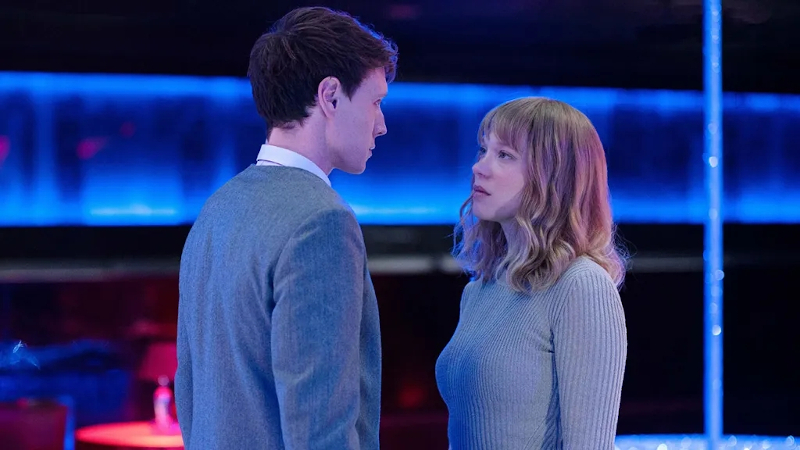Director – Bertrand Bonello – 2023 – France – Cert. 15 – 146m
*****
Required to expunge her emotions by the ruling AI of 2044, a woman with a sense of dread revisits her past lives in 1910 and 2014 and their incarnations of the love of her life – curious mix of art house movie and science fiction is out on MUBI from on Friday, July 12th
An actress (Léa Seydoux) against green screen rehearses a scene in a house – the director’s voice tells her where the stairs and other features are in relation to her position and marks on the floor. With these minimal visuals but with the addition of music and full sound effects, she works through the scene up to the point where she sees the terrifying shadow of the Beast on a wall and screams. Consciously or unconsciously, this echoes the screen test on the boat of Ann Darrow (Fay Wray) in King Kong (Merian C. Cooper, Ernest B. Schoedsack, 1933) as she is required to scream at an unseen, gargantuan monster for the camera.
As in Kong, this scene anticipates one that will play out later in the film. However, Bonello plays it as a curious introduction to the whole, rather than part of the story proper. Nevertheless, it sets us up for what is to come and adds considerably to the tension throughout.
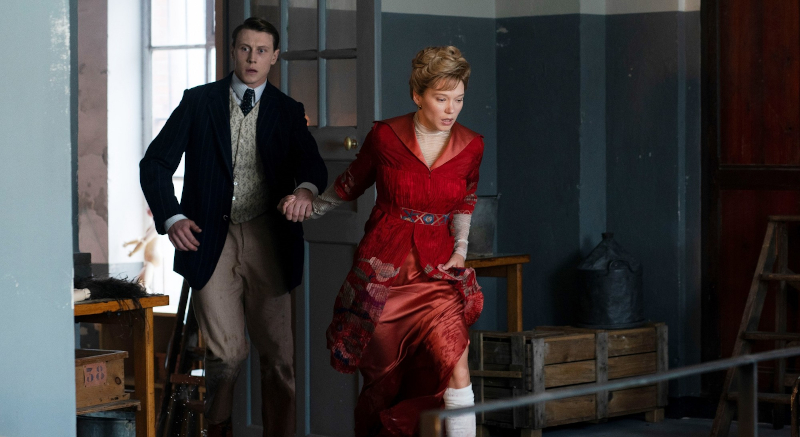
Loosely, the narrative is adapted from Henry James’ novella The Beast in the Jungle (1903) in which a man becomes convinced that at some point in life he will be attacked by a horrible beast so refuses to marry the woman he loves in order to spare her. Bonello swaps the male and female roles around so that it is the woman Gabrielle Monnier (Seydoux) who believes she will be attacked by a beast and the man Louis Lewanski (George MacKay) who offers to watch for the Beast to protect her from it. Bonello slightly shifts the time to incorporate The Great Paris Flood of 1910 into his story.
On top of that, Bonello adds two further narratives of his own with the same two characters, or, at least, the same two actors playing characters with the same names. In the one additional narrative, people in an AI-controlled 2044 are required to undergo a process purging them of their emotions, and Gabrielle must submit to that process, which involves revisiting her previous lives. Although the film doesn’t start with it, this story ultimately functions as a frame story within which the other two stories sit, or, at least, that was how I took it. In the other additional narrative, set in L.A. in 2014, incel misogynist Louis regularly posts about his view of the world on social media based on the fact that no woman is interested in him, despite Gabrielle’s subsequent attentions suggesting the contrary.
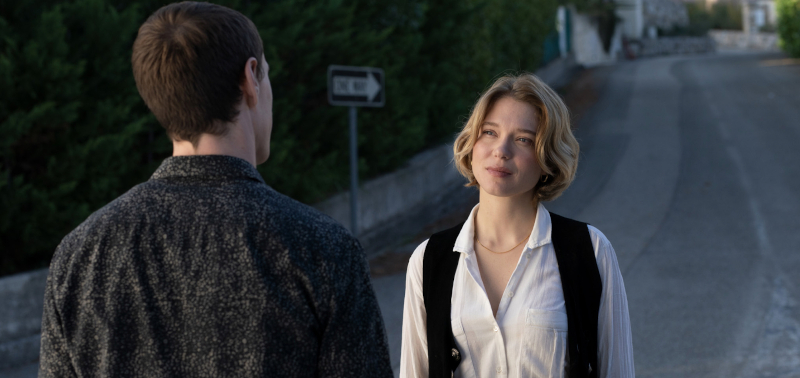
The 1910 narrative is shot on 35mm and looks as sumptuous as any costume drama, opening in a scene in a salon where Gabrielle runs into Louis while trying to find her husband. The salon is showing paintings by an artist who produces images far ahead of anything produced in art at the time: their raw images of flesh look more like the sort of thing Francis Bacon would paint half a century later. If this, like the 2044 recalling of 1910 and 2014, suggest a form of time-travel, that seems to be a red herring. So too does a 1910 sequence in which he moves his hand around between both of hers, an eroticism developed throughout the remainder of the film as the scene is revisited and expanded. Gabrielle constantly protests she loves her husband, but the married couple never really exhibit any real chemistry to confirm her declaration.
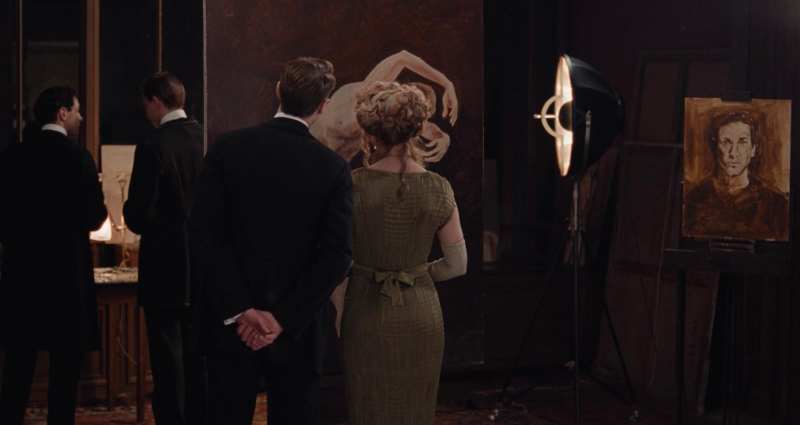
The 2014 story, shot on present day digital system amidst neo-Brutalist, Angelino architecture, feels more video-y and less chemically photographic, lending a harsher and more raw immediacy to a story which is essentially a riff on a stalk-and-slash horror. The 2044 story makes much use of Gabrielle lying in a bath of black liquid much like the bath used to heal the poisoned Baron Harkonnen (Stellan Skarsgård) in Dune and Dune Part Two (Denis Villeneuve, 2021 and 2024), but in Bonello’s film it’s the site of a procedure which, once Gabrielle agrees, involves a robot arm injecting a needle into her ear.
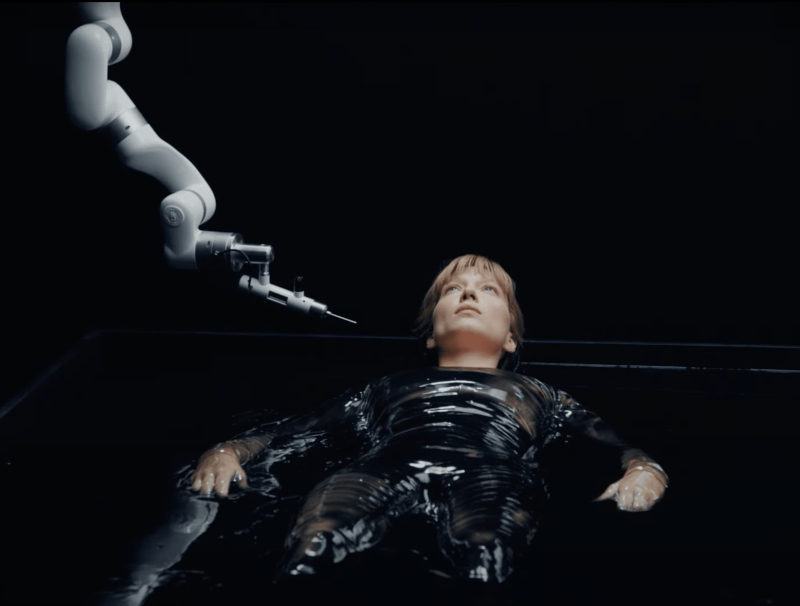
A sub-theme about dolls casts Gabrielle’s 2010 husband as a successful manufacturer of dolls and in 2044 has her befriended by Kelly (Gouslagie Malander from Saint Omer, Alice Diop, 2022), a woman – or perhaps some sort of AI android – designated as a doll who is as happy to offer herself for sex (which offer Gabrielle rejects) as for going dancing (which she accepts). The latter leads to a series of specific-year-themed-playlist nights in a renamed dance club (1972, 1980, 1963) – a nightclub also features in the 2014 narrative – which serves as a place of rendezvous for Gabrielle and Louis.
It’s a bold outing, as exhilarating in places as it is infuriating in others, and placing itself squarely within one of this writer’s favourite genres, the genre-bender. Certainly you could make the case for it being science fiction or art-house, but parts feel like romance, horror or costume drama to name but three. It’s certainly a literary adaptation of sorts, albeit one which may well alienate literary purists. Perhaps the whole isn’t any greater than the sum of its parts. But, what parts! Then again, perhaps that the whole is greater. See it and decide for yourself.
The Beast is out on MUBI from on Friday, July 12th following its screening in cinemas in the UK on Friday, May 31st and in the Glasgow Film Festival which ran from Wednesday, February 28th to Sunday, March 10th.
[Read my alternative review for Reform]
Trailer:
